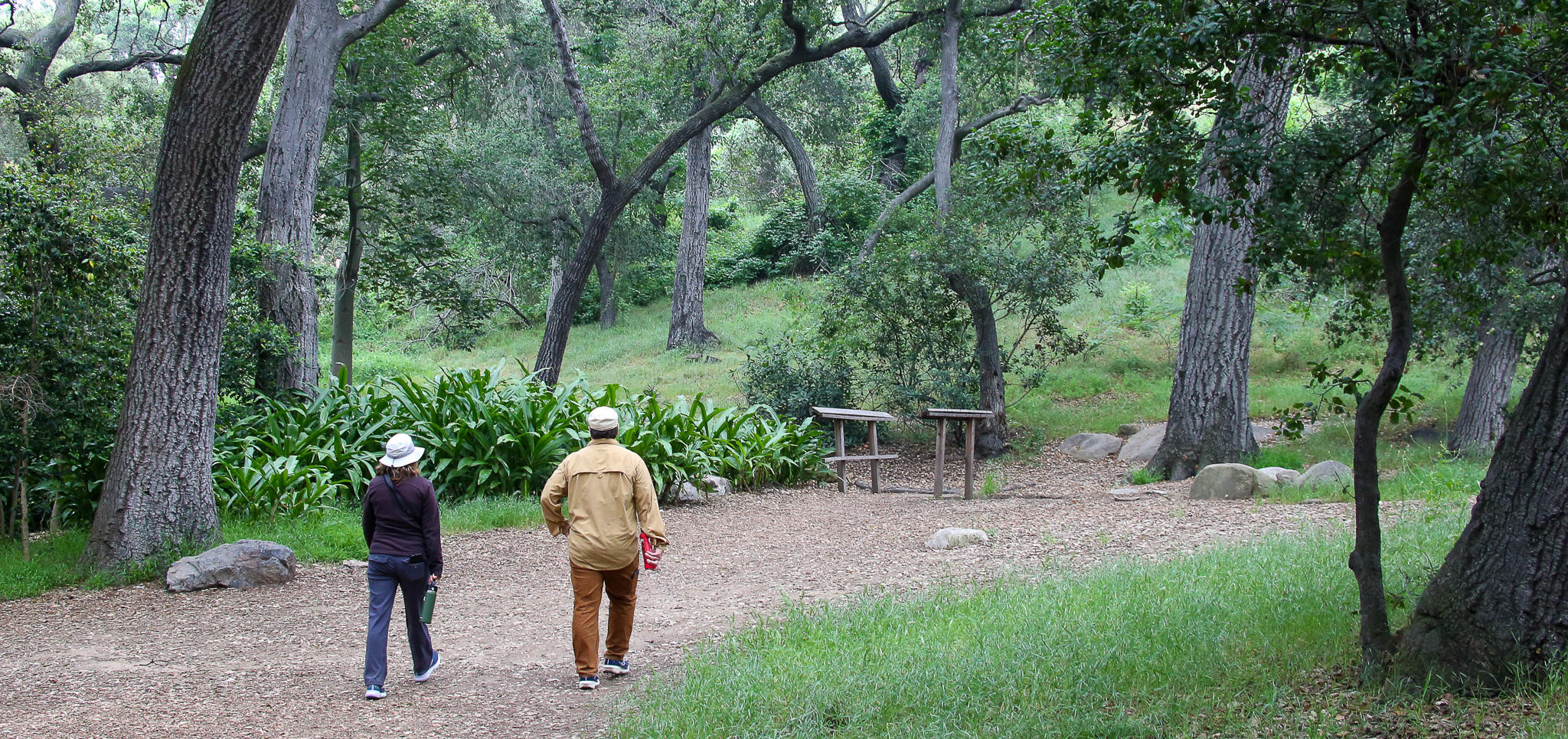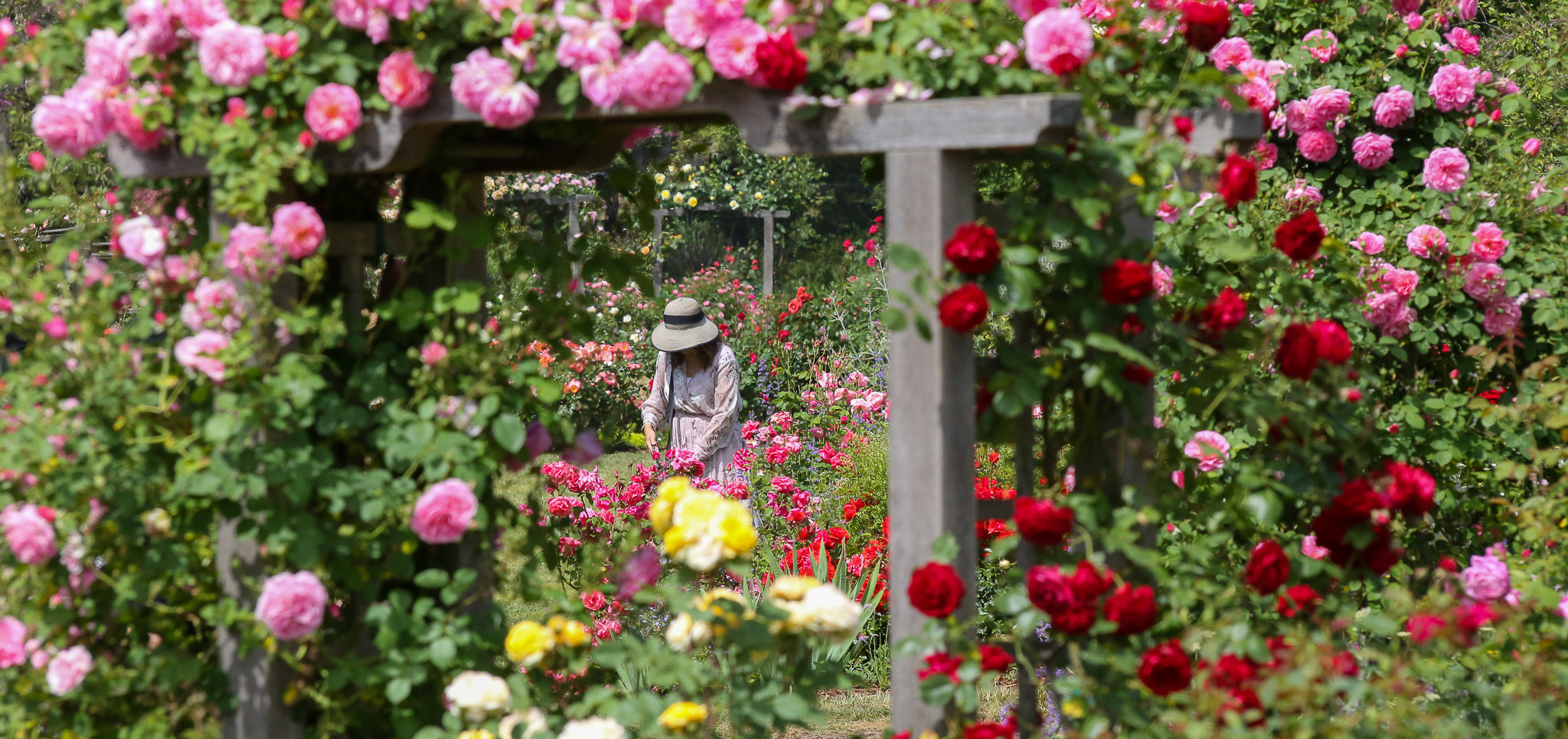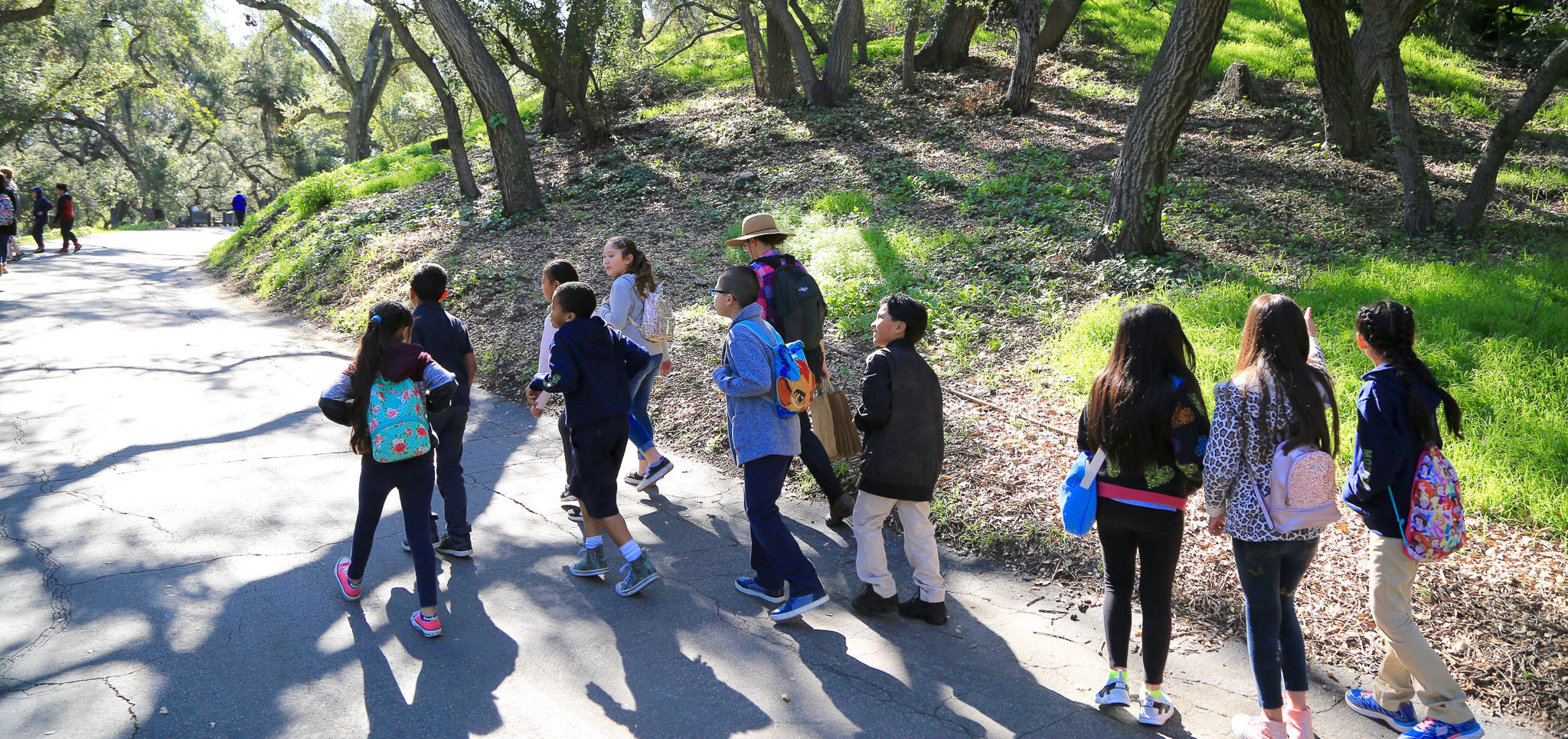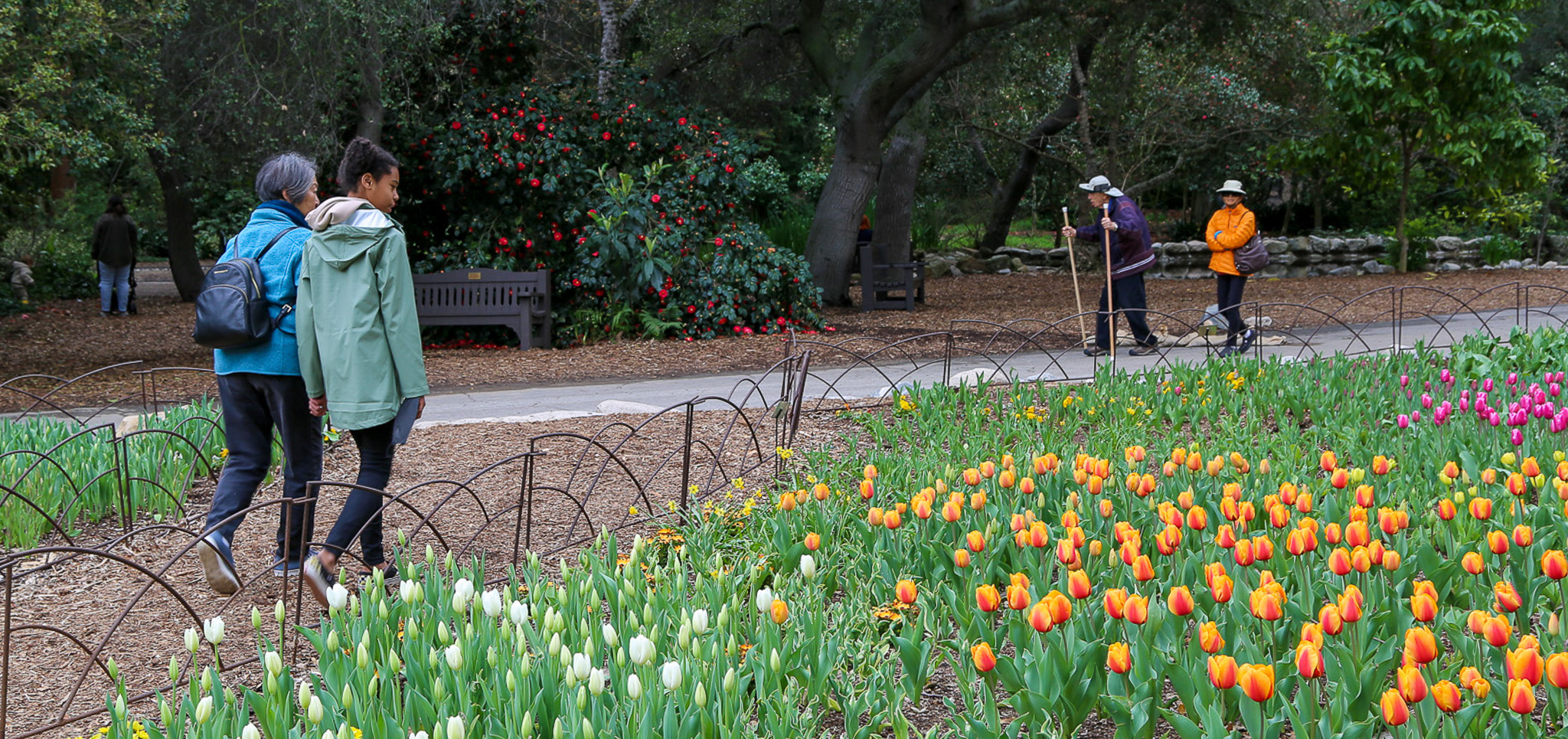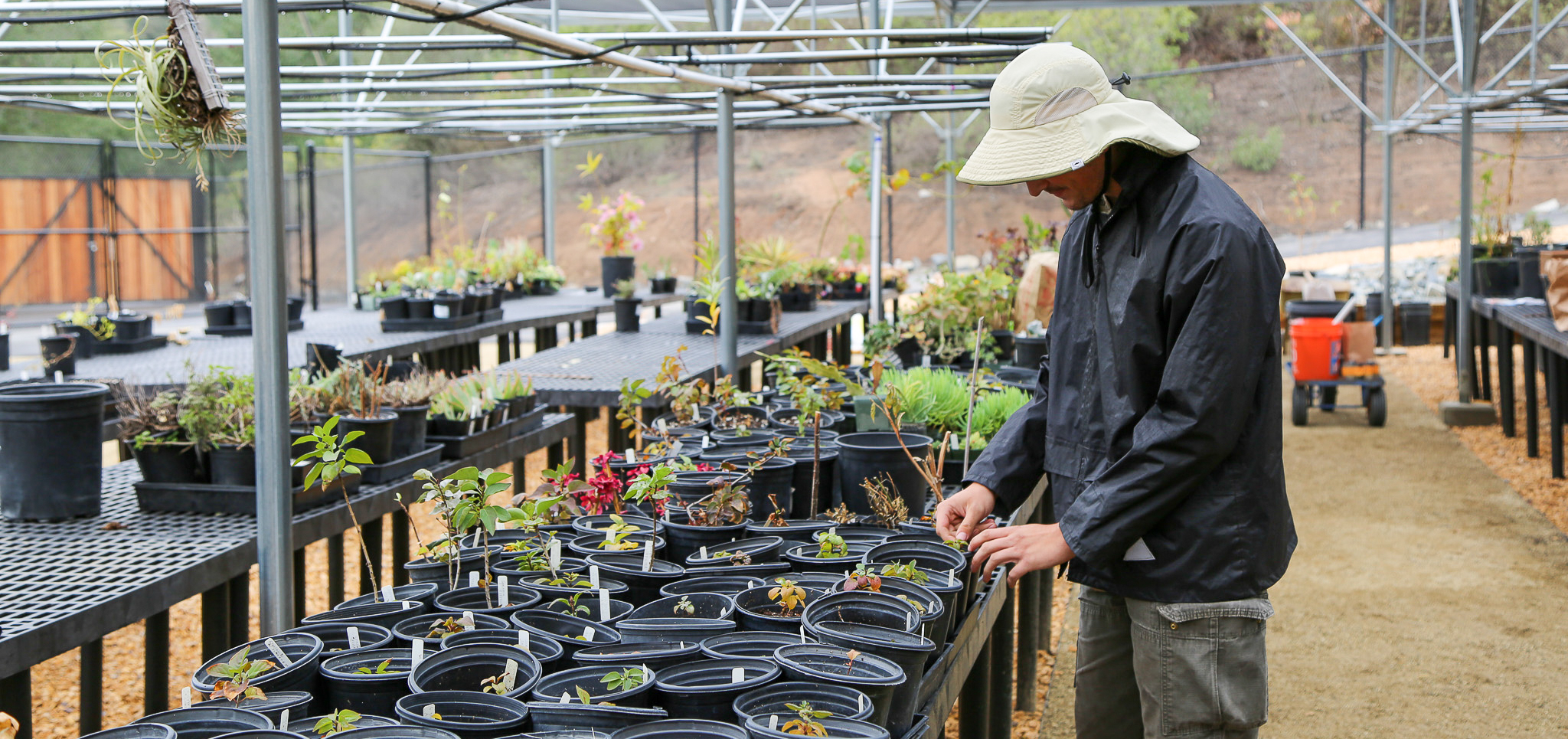Behind the scenes
As a botanical garden, Descanso is a museum where the items in the collection are living plants. Instead of paintings or ancient vases, the precious pieces here are the flowers at your feet and the trees overhead. Descanso’s core collections are the Camellia Collection, the Lilac Collection, the California Native Plants Collection, the Canopy Oaks Collection, the Ancient Plants Collection, and the Display Collection.
A key mission of botanic gardens is to conserve plant genetics for research and preservation, and do it in such a way that allows the public to experience and enjoy all the plants have to offer.
Collection management and curation
Being accredited as a museum requires detailed record keeping, with collections management at the heart of curating our plant collections. Our Collections Policy institutionally entrenches our intentions for the Descanso collections, allowing us to evaluate challenges and plan for the future and advance a mission that reaches beyond individual desires or objectives.
Learning what thrives and what doesn’t
Data that we gather for our current collections helps us to determine what plants might succeed better than others and drives collection policy changes. Records that tell us what didn’t survive and why are just as valuable as records on living plants. When a plant is lost due to natural causes, or removed for another reason, we keep detailed notes on what happened so we can adjust our practices as necessary. Learning what didn’t thrive here is useful in understanding which plants will flourish.
How we add plants to our collections
A plant can be added to a collection in a number of ways. Some plants are purchased, others we receive as donations. There are some plants we propagate onsite, whereas other plants are found in the existing landscape.
Plant detective work
In order to keep accurate records and labels, our first order of business is to verify the plant’s name. This task isn’t always straightforward because plant names can be a little convoluted. Plant species and family names sometimes change after researchers find that certain plants are more or less closely related than previously thought. Also, marketers have a tendency to create new “snappy” plant names to appeal to customers — so plants end up being sold under different trade names than the ones that were originally registered.
A unique code
Accession is a word used in the museum industry that refers to adding something to a collection. You may have seen small, rectangular aluminum tags hanging on plants around the garden. These tags are accession tags, and are embossed with a plant’s scientific name and accession number. Accession tags help us inventory our collections.
The first four digits of an accession number signify the year that we added the plant to the collection. Digital record keeping at Descanso started in 1998, so most accession numbers start with years in the 1990s and 2000s.
You may notice that some large, old plants have more recent years in their accession numbers. This happens when a plant that was found during an inventory doesn’t have a record in the database. Unless we can find an old invoice or other record for the plant, we have to accession it based on the year that we first notice it in the gardens. Additionally, we don’t give accession numbers to trees like oaks until they become big enough to thrive, usually once their trunks are 6 inches or more in diameter.
